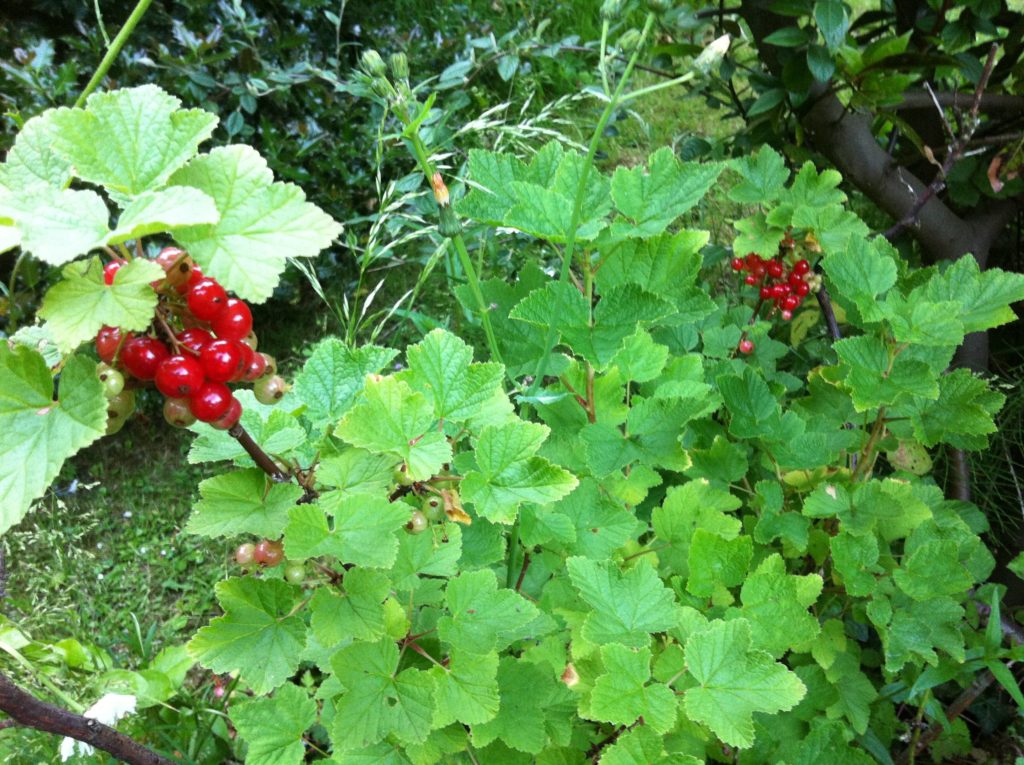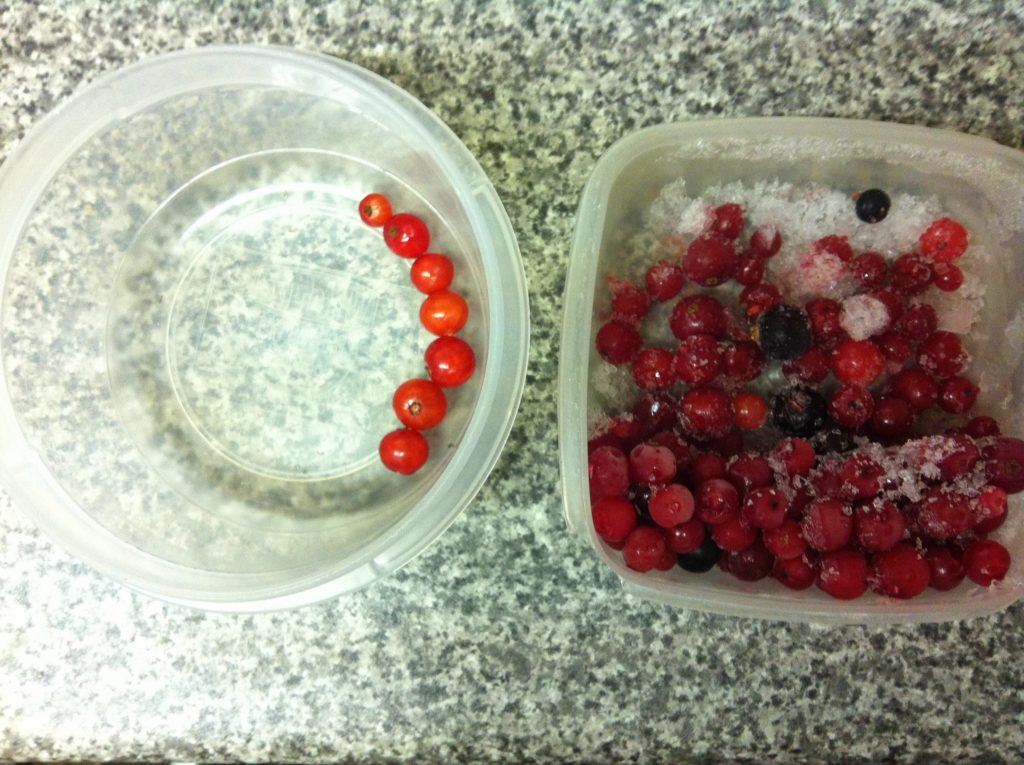Redcurrants fruit on old wood, blackcurrants fruit on new wood. This affects the way they are pruned, as blackcurrants should be cut back quite heavily every year to promote new growth, which will produce fruit the next year. Redcurrants on the other hand, shouldn’t be pruned too heavily, otherwise the lack of old wood will mean no fruit the next year. When I first read of this difference in pruning requirements several years ago, my first thoughts were ‘I’ll never remember which way round they are’. However, this proved not to be the case.
The fact of the matter is that I neglect my currant bushes. I have two of them, one redcurrant and one blackcurrant. I purchased them from a shop that doesn’t specialise in plants at the very reasonable price of three fruit bushes for £5. The third bush I bought was a blueberry. However, on unpacking them I found that the blueberry was really just a small cutting from a bush, and had no real roots. It didn’t survive. The currants however, did. This was in 2008, when I very first started to get interested in growing my own food.
Now it has become easy for me to remember which way round they are when it comes to old or new wood producing fruit for the very simple reason that I never prune them. Every year I mean to, but never get around to it. Every year the blackcurrant produces at most one or two berries, whereas the redcurrant gives me a respectable yield for the size of the bush. This year isn’t looking like being an exception, as I’ve not seen a single berry on the blackcurrant bush, but despite the lack of summery weather we are experiencing, the redcurrant is starting to yield its glorious bounty.

The first few ripe redcurrants of the season
I only have the one redcurrant bush, so jam and wine are out of the question, as I simply don’t get enough fruit. The first couple of years that I got fruit from these bushes (I did used to get blackcurrants too, when the bush was still growing and had new wood), I simply added the berries to batches of mixed fruit for preserving. The first year I made a peapod and hedgerow wine, with the hedgerow part coming from my currants and a variety of berries that I had foraged, mainly elderberries and blackberries. The next year I made hedgerow jam, using the same mixture of currants and foraged berries.
Then a couple of years ago I decided that I would rather preserve them in such a way that they were not lost in a vast mixture of other flavours, but were instead the star of the show. I picked and froze them while I thought about it. A few months later we started planning our Christmas celebrations and invited some family round for Christmas Day. Then it occurred to me, why not make my own redcurrant jelly to be used in place of cranberry jelly? Of course it would only be a very small batch, but that would be fine, as I was making it to be served at just one meal.
For me there is something magical about consuming a home grown foodstuff in those dark, cold winter days when the garden is barren. And what better time to serve the preserved produce grown all those months before, than that time of geniality and feasting that is Christmas Day? I hope that even those of you who don’t celebrate Christmas will appreciate how rewarding it is to preserve home grown produce from the plentiful summer months, and then share it with loved ones at a celebration in the more barren months. For me it is always simultaneously backwards and forwards looking, with fondness back to the successes of the last growing season, and optimistically and thoughtfully forwards to the next.
So I left my frozen redcurrants out to thaw on Christmas Eve evening and made a quick redcurrant jelly on Christmas morning. We served it at dinner that day, and everyone made a point of trying it, and all liked it. I was pleased with how it had turned out, as I had never made it before and it came out a perfect consistency and it tasted delicious too. So it is of little wonder then that I planned to do the same last Christmas. It is more of wonder that I never actually got round to doing it, and I can’t remember why. So I still have a small Tupperware box containing the entirety of last year’s redcurrant crop (and four or five blackcurrants) in the freezer.
I am unsure what I plan to do with this year’s crop, but today I started picking the ripe redcurrants. For now I am just freezing them with last year’s batch. I am reluctant to leave the riper specimens on the bush much longer, as I feel I have been lucky that the birds have spared them this long. I’ll probably think about making the jelly again. I’d love to make jam, wine, or even some fruit squash for the kids. But even with two years’ fruit from the one bush I don’t think I’ll have enough.
When we moved house a few weeks ago I picked up the pot containing the redcurrant bush to load it on to the van, and I found that the roots had come through the bottom of the pot and burrowed into the soil below. So after seven years of growing my currant bushes in pots I feel that this year will be the year to plant them out. This is also the first house we’ve rented that has space for them. There is a raised bed of sorts at the edge of the vegetable patch, which we only discovered during the clearance. My first instinct was to remove the boarders and absorb it into the vegetable patch. However, it became a temporary compost heap when the compost bin was filled, a purpose it has continued to serve.
I am now thinking of turning this raised bed into a soft fruits patch. It doesn’t get full sun, but it should get enough. We have some gooseberry bushes and raspberry canes at the allotment. I’m thinking about trying my hand at propagating some more bushes from cuttings. I see the benefits of this as being fourfold: (i) I expect this would be a very rewarding experience; (ii) It would be a useful skill to learn, theoretically leaving us self-sufficient in soft fruit bushes; (iii) When we do move from this property I could dig some of the younger plants up and pot them to take with me; (iv) The obvious culinary benefits of growing a lot of our own soft fruits.
So there you have it, I am now officially harvesting my redcurrants. I will post as soon as I have any updates on the proposed soft fruit bed, or how I intend to use the redcurrants.


